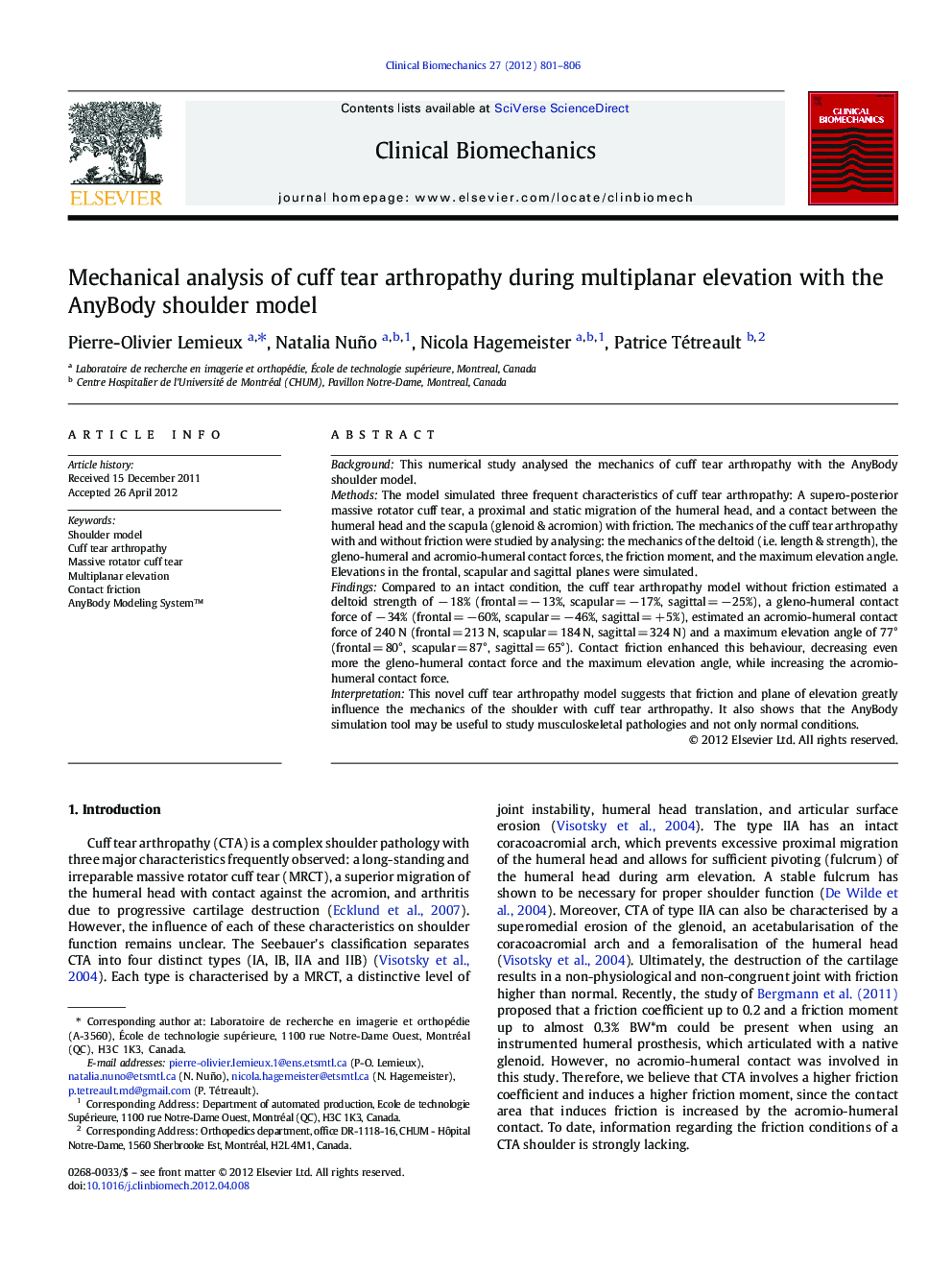| Article ID | Journal | Published Year | Pages | File Type |
|---|---|---|---|---|
| 6205159 | Clinical Biomechanics | 2012 | 6 Pages |
BackgroundThis numerical study analysed the mechanics of cuff tear arthropathy with the AnyBody shoulder model.MethodsThe model simulated three frequent characteristics of cuff tear arthropathy: A supero-posterior massive rotator cuff tear, a proximal and static migration of the humeral head, and a contact between the humeral head and the scapula (glenoid & acromion) with friction. The mechanics of the cuff tear arthropathy with and without friction were studied by analysing: the mechanics of the deltoid (i.e. length & strength), the gleno-humeral and acromio-humeral contact forces, the friction moment, and the maximum elevation angle. Elevations in the frontal, scapular and sagittal planes were simulated.FindingsCompared to an intact condition, the cuff tear arthropathy model without friction estimated a deltoid strength of â 18% (frontal = â 13%, scapular = â 17%, sagittal = â 25%), a gleno-humeral contact force of â 34% (frontal = â 60%, scapular = â 46%, sagittal = + 5%), estimated an acromio-humeral contact force of 240 N (frontal = 213 N, scapular = 184 N, sagittal = 324 N) and a maximum elevation angle of 77° (frontal = 80°, scapular = 87°, sagittal = 65°). Contact friction enhanced this behaviour, decreasing even more the gleno-humeral contact force and the maximum elevation angle, while increasing the acromio-humeral contact force.InterpretationThis novel cuff tear arthropathy model suggests that friction and plane of elevation greatly influence the mechanics of the shoulder with cuff tear arthropathy. It also shows that the AnyBody simulation tool may be useful to study musculoskeletal pathologies and not only normal conditions.
